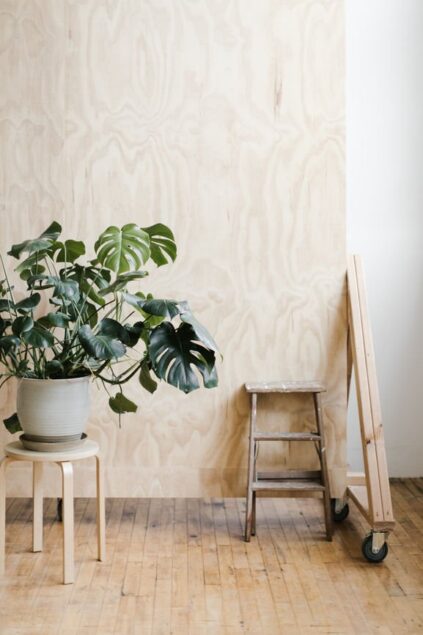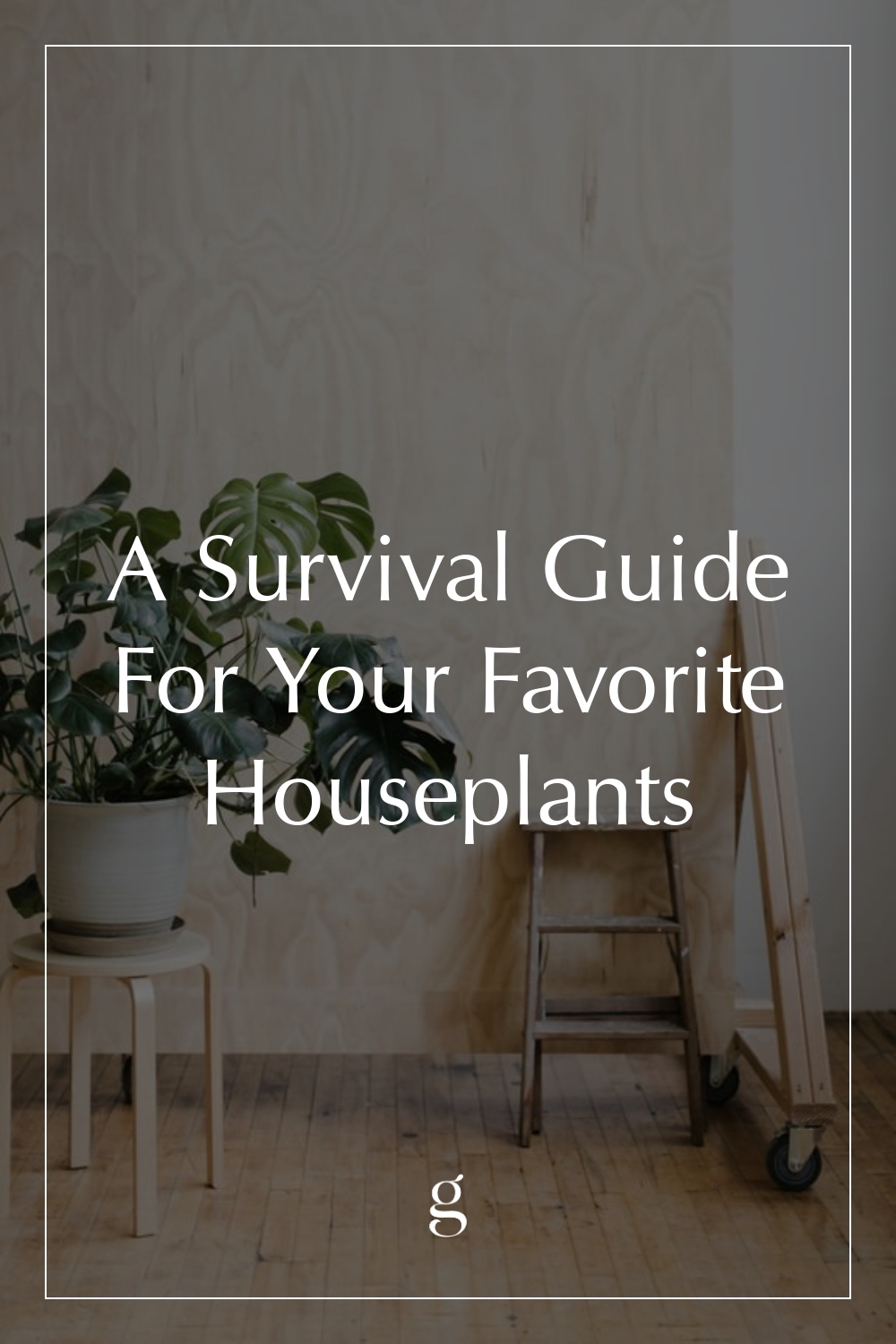
A Survival Guide For Your Favorite Houseplants
Maintain A Vivacious Indoor Jungle
There are also many benefits to keeping plants inside your home—purified air, reduced stress, and improved sleep quality are just a few. Houseplants make for affordable and sustainable decor (especially when propagated), and they can liven up even the darkest of spaces.
You don’t have to be an expert gardener or have a green thumb to own indoor plants. Many houseplants don’t require as much care or work as you may assume, so you can choose the ones that make sense for your lifestyle and your space.
Whether you’re buying your first or umpteenth plant, here are a few of our favorite tips and tricks that will ensure you soon have a thriving indoor jungle. And don’t miss our favorite gifts and supplies for newbie plant parents!
Choosing Your Houseplants
I can’t think of a better piece of advice than this: “choose a houseplant for your space, not a space for your houseplant.” That nugget of wisdom comes from Wellness Coach and Plant Mother Rachel Aust (check out her Youtube video on plant care—serious houseplant inspiration).
Aust’s words ring true. It’s essential to select plants that will work well in your home. Light, temperature, and space for growth are all important factors. Additionally, be honest about how much time you have to invest in caring for your indoor jungle. Do you work all day? Will you likely forget to water your plants? Do you have pets that may think the leaves are a treat? Your answers to these questions will help you decide which plants are right for your home.
Bringing Your Plants Home
Just like any living and breathing thing, plants need help adjusting to a new space. To keep your new plants healthy and happy, it’s essential you give them a little extra care in the first few weeks at home. Try these tips:
Keep Your Labels
Most houseplants will come with tags or labels that tell you the name of your plant, as well as its specific needs for water, food, and sun. It’s a good idea to keep these labels. Either leave them in the plant’s soil or take a picture of the details before tossing them. Having this information to reference will make caring for your new friends that much easier.
Avoid Repotting
While it can be tempting to transfer your new houseplants to that cute clay pot, it’s best to keep them in their nursery containers while they adjust to your space. You can always place the plastic containers inside larger pots and baskets if you don’t like how they look. Once it is time to move your plants, ensure you choose pots with drainage holes. Additionally, the pots should be one inch larger than the current containers so that your plants have enough room to expand and grow. This video tutorial from The Sill is an excellent visual guide for repotting.
Check on Your Plants
You will eventually get to a point where you don’t need to check on your plants every day, but in the first few weeks, it’s a good idea to pay special attention to how they are adjusting. The leaves on your houseplants are good indicators. Watch for wilting or browning leaves, as well as bugs. If you begin to notice problems, check your labels to ensure you’re not overwatering or giving your plants too much sun. If problems persist, you can do some online research or talk with your local nursery about solutions.
Caring for Your Houseplants
Once your plants are adjusted to your home, it’s time to let them thrive and grow! Here are a few things to remember when caring for your houseplants.
Water and Food
“If you’re likely to forget to water your houseplants, try setting alarms on your phone or keeping a spray bottle next to your pots as a visual reminder.”
Plants are living things, and they need to eat and drink just like we do. If you’re likely to forget to water your houseplants, try setting alarms on your phone or keeping a spray bottle next to your pots as a visual reminder. This app will also remind you when it’s time to water your plants. I’ve found a soil moisture sensor is also a worthwhile investment to ensure adequate watering. Likewise, plants love food. Homemade plant food promotes health and growth, and it’s natural and package-free, unlike store-bought fertilizers.
Quality Soil
I’ve made the mistake of using dirt from my yard or leftover garden soil when repotting my houseplants. While they didn’t die, they didn’t thrive either. It can be tempting to forgo quality soil in hopes of saving a few dollars but don’t expect your plants to flourish. Check with your nursery or local plant store to find out which soil is preferred by your specific plants.
Dealing with Pests
It’s not uncommon for houseplants to attract bugs and insects. To discourage tiny creatures from nesting, clean your plants’ leaves regularly with a wet cloth. Wiping down the leaves with diluted organic soap also wards off insects. If you do notice bugs (these are the most common types), you’ll want to quarantine your plant immediately to avoid contaminating your other houseplants. YouTube creator Keisha Adinkra has a wonderful tutorial on how to use Neem oil as a natural remedy to get rid of bugs.
Best Houseplants for Newbie Plant Parents
Succulents have forever been hailed the houseplant for newbies, but they aren’t your only option when it comes to low-maintenance indoor plants. I have all three of the following variants in my apartment—so I can attest to their easy-going nature. I highly recommend starting here before expanding your plant collection.
Pothos (Epipremnum aureum)
Pothos (also called Devil’s Ivy) is one of the most versatile and low-maintenance houseplants. Its heart-shaped leaves grow on crawling vines, making it the perfect plant for those odd nooks and crannies at home. Pothos is also a beautiful hanging plant and can grow up to eight feet long.
Sun | Prefers bright and indirect sunlight.
Water | Give your Pothos a drink once a week. Let the soil dry out completely between waterings. Yellowing leaves are a sign of overwatering.
Swiss Cheese Plant (Monstera deliciosa)
If you’ve been scrolling through plant inspiration photos, you’ve most likely seen a Swiss-cheese plant. It’s one of the trendiest indoor houseplants due to its considerable size, attractive leaves, and simple needs. Swiss cheese plants can grow up to ten feet tall and prefer a moss pole for upward growth.
Sun | Will grow in both low and bright light. Avoid direct sunlight.
Water | When the top couple of inches of soil are dry, it’s time to give your Swiss cheese plant a drink.
ZZ Plant (Zamioculcas zamiifolia)
Rumor has it—you can’t kill a ZZ plant. It’s one of the easiest houseplants to care for, and it’s also one of the most beautiful. With upright growling leaves that are vibrant and glossy green, ZZ plants can liven up any space. They are also excellent for cleaning the air in your home. Just wash your hands after handling the leaves, and keep it away from pets and children, because ZZ plants are poisonous when consumed.
Sun | Prefers moderate and indirect sunlight. Will tolerate low light, but don’t expect too much growth.
Water | ZZ plants grow from round tuberous rhizomes that store water, so it’s essential you don’t overwater this plant. Give your ZZ a drink every one to two weeks, depending on how dry the soil is. Learn more about how to tell if your plants need water here.
The Good Trade editors endorse products we genuinely love. If you end up making a purchase through one of our affiliate links, we may earn a commission. Learn more here.
RELATED READING

Kayti Christian (she/her) is an Editor at The Good Trade. Growing up beneath the evergreens in the Sierra Nevadas, she returns to California after a decade split between states—including three years lived abroad. With an MA in Nonfiction Writing, she’s passionate about storytelling and fantastic content, especially as it relates to mental health, feminism, and sexuality. When not in-studio, she’s camping, reading memoir, or advocating for the Oxford comma.

